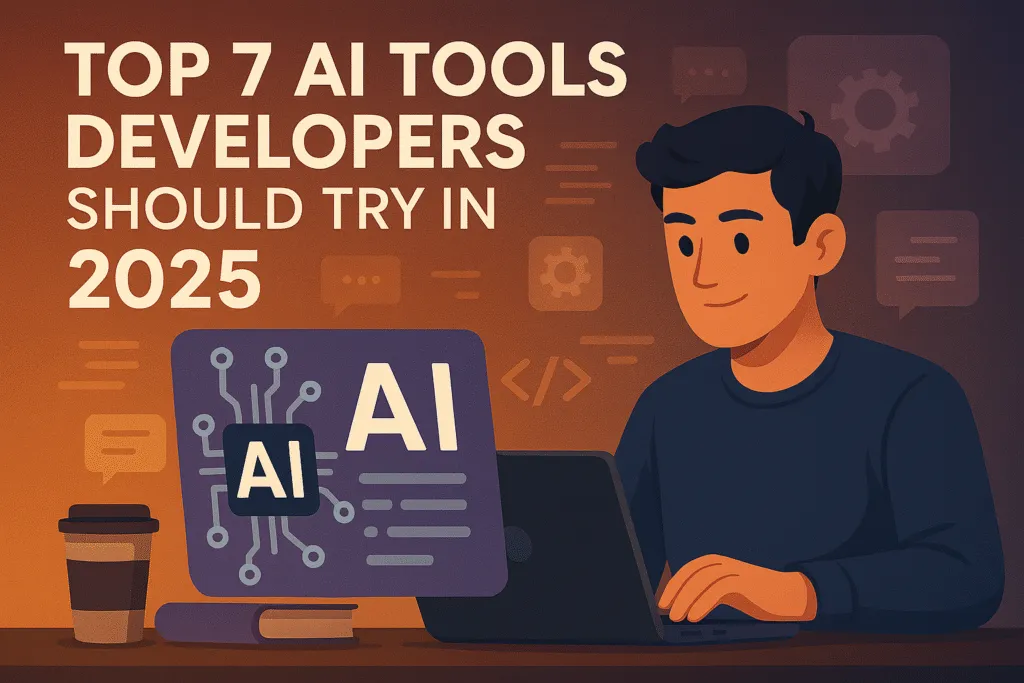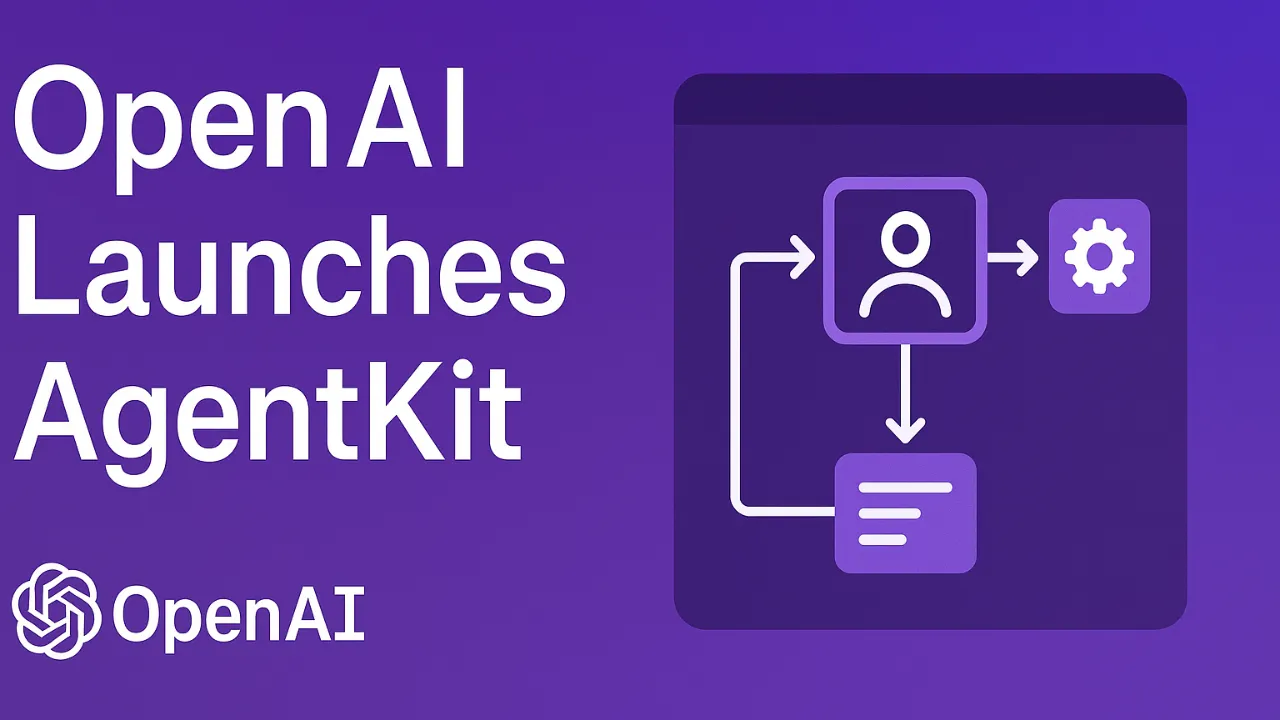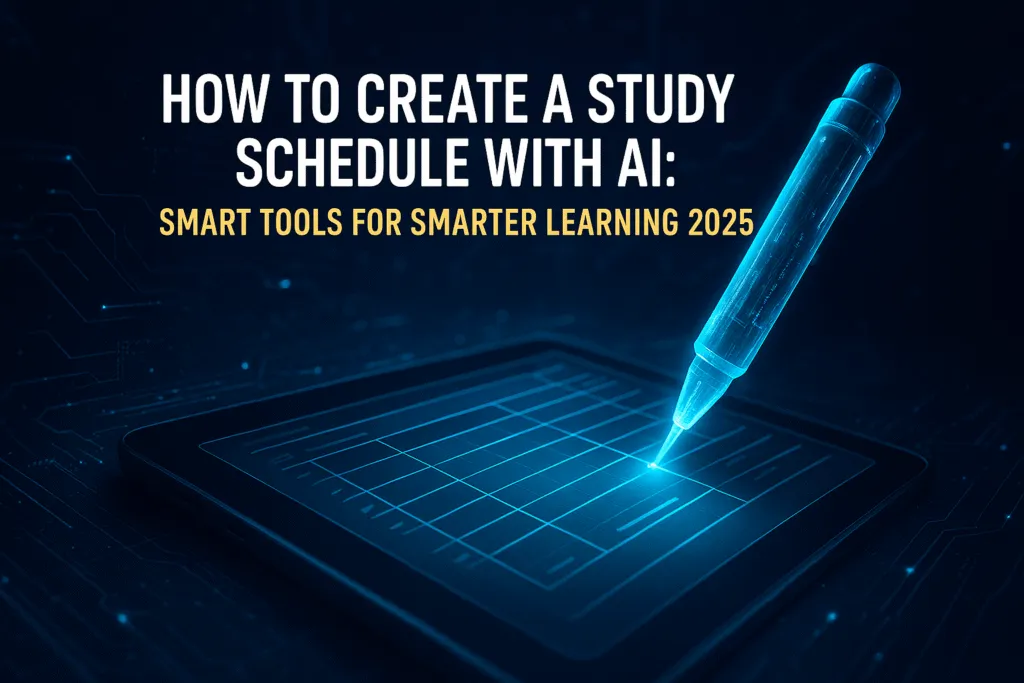Introduction: Why AI Tools Are the Future of Development
The world of software development is evolving faster than ever, and leading this change are the AI tools developers are increasingly adopting. From writing cleaner code to automating repetitive tasks, AI is no longer just a buzzword—it’s a practical advantage. In 2025, developers are expected to not only write code but also collaborate with intelligent systems that understand context, suggest improvements, and even predict bugs before they happen.
What once took hours can now be done in minutes. Whether you’re building web apps, managing cloud infrastructure, or writing APIs, the right AI tools can dramatically reduce development time while improving accuracy. These tools are becoming smarter with each update, learning from your patterns, codebase, and even your team’s workflow. That’s why AI tools developers trust are those that seamlessly integrate with existing environments like VS Code, GitHub, or cloud platforms.
For solo developers, AI is like having a personal coding assistant. For teams, it boosts collaboration and standardization. Even junior devs can now work with confidence, knowing they have AI-backed support at every step. It’s not about replacing developers—it’s about enhancing their capabilities and helping them focus on the bigger picture.
As the demand for faster delivery and cleaner code rises, developers who embrace AI early will have a major edge. This shift isn’t optional anymore—it’s essential for staying competitive. So, if you’re still on the fence, now is the time to explore how AI can transform the way you develop software. The future isn’t coming—it’s already here, and it’s powered by intelligent tools.
GitHub Copilot – Your AI Pair Programmer
Among all the AI tools developers are using today, GitHub Copilot stands out as a true game-changer. It’s more than just an autocomplete plugin—it acts like an intelligent coding companion that understands your context and suggests entire lines or blocks of code while you type. Built by GitHub and powered by OpenAI, Copilot has quickly become a favorite for developers working in JavaScript, Python, TypeScript, and many other languages.
What makes GitHub Copilot unique is its ability to learn from the comments and code you write. Start describing a function in plain English, and Copilot will try to generate it for you. Whether you’re building UIs, writing unit tests, or working on backend logic, it constantly provides helpful suggestions tailored to your coding style.
For beginners, it’s like having a tutor that guides you through best practices and helps avoid common errors. For experienced developers, it speeds up the coding process by reducing the time spent on boilerplate or repetitive code. It’s especially useful when you’re exploring unfamiliar frameworks or libraries—you can get smart code suggestions without diving deep into the documentation.
Another advantage is its seamless integration with popular IDEs like Visual Studio Code. Once installed, it works in the background, making your workflow smoother without disrupting your coding habits.
As AI tools developers rely on continue to grow in capability, GitHub Copilot is proof that smart assistance is no longer a luxury—it’s a productivity essential. Whether you’re working solo or in a team, Copilot can help you write better code, faster. If you’re serious about leveling up your development workflow in 2025, this is one AI tool worth exploring.
Tabnine – Smarter Code Predictions
When it comes to AI tools developers can depend on for intelligent, fast, and privacy-conscious code suggestions, Tabnine has carved out a solid space in the AI-assisted development world. Unlike some tools that rely heavily on cloud-based processing, Tabnine gives developers the flexibility to run its models locally—making it ideal for those who prioritize speed, security, or offline workflows.
Tabnine uses machine learning models trained on billions of lines of open-source code to deliver context-aware code completions. As you type, it predicts your next line or function, often offering multiple smart suggestions. Whether you’re writing in Python, Java, Go, or JavaScript, Tabnine adapts to your style over time, delivering highly relevant recommendations.
One of its key strengths is how well it integrates into most popular IDEs, including VS Code, IntelliJ, Atom, Sublime Text, and even Vim. You don’t need to drastically change your environment to use it—just install and go. For teams, Tabnine also supports private model training, which means your AI assistant learns specifically from your team’s codebase, improving accuracy and alignment with your coding standards.
Unlike some other AI tools developers use, Tabnine puts a strong emphasis on developer control. You can tune how assertive the AI is, review suggestions before accepting them, and ensure that code privacy remains intact—especially important for enterprise environments.
In 2025, productivity isn’t just about writing more code—it’s about writing smarter code. Tabnine fits right into that goal, helping developers reduce errors, save time, and stay focused. If you’re looking for an AI tool that understands your coding style and evolves with you, Tabnine is one of the smartest choices on the market today.
CodeWhisperer by AWS – AI Coding Assistant for Cloud Development
For developers working heavily in cloud environments, CodeWhisperer by AWS is one of the most practical AI tools developers can add to their tech stack. Designed specifically with cloud-based workflows in mind, CodeWhisperer goes beyond simple code suggestions. It understands the AWS ecosystem deeply and helps you write secure, scalable code tailored for services like Lambda, S3, DynamoDB, and EC2.
Unlike general-purpose AI coding assistants, CodeWhisperer is trained to recognize cloud-specific patterns and best practices. This means if you’re building serverless functions, integrating APIs, or provisioning cloud resources, it offers intelligent recommendations that save time and reduce errors. It even auto-completes IAM policies—a task that can otherwise be tedious and error-prone.
A standout feature is its built-in security scanning, which flags sensitive data exposure, potential vulnerabilities, and unsafe code patterns. For cloud developers, this is a huge plus, as it helps you shift security left—catching issues during development instead of after deployment.
It integrates smoothly with IDEs like VS Code and JetBrains, allowing developers to access it without leaving their favorite coding environment. Whether you’re writing Python, Java, or JavaScript, CodeWhisperer adapts quickly and improves with continued use.
As AI tools developers rely on become more specialized, CodeWhisperer shines by focusing on cloud-native development. It not only helps with speed but also improves code quality and compliance—two things that matter deeply in production environments.
If you’re building on AWS in 2025, CodeWhisperer isn’t just helpful—it’s strategic. From beginners experimenting with the cloud to seasoned engineers managing enterprise infrastructure, this AI coding assistant is designed to meet you where you are and help you code smarter in the cloud.
ChatGPT – Debugging, Docs, and Beyond
Among the most versatile AI tools developers are using in 2025, ChatGPT has become a must-have companion. While it’s widely known for conversational abilities, its true power lies in its flexibility—helping developers with everything from debugging tricky errors to writing clear documentation and even brainstorming architectural decisions.
Stuck with an error message you can’t decipher? Paste it into ChatGPT, and you’ll often get a detailed explanation along with potential fixes. Need a quick SQL query, a regex pattern, or a test case? Just ask. ChatGPT can instantly generate solutions tailored to your specific scenario, saving hours of googling and trial-and-error.
Documentation is another area where ChatGPT shines. Whether you’re creating README files, in-code comments, or API docs, it can generate clear, human-friendly descriptions that enhance code readability and project understanding. This is especially useful for solo developers or small teams where formal documentation often gets overlooked.
But it doesn’t stop at writing code or docs. You can use ChatGPT to plan features, create roadmap outlines, break down tasks for agile sprints, or even review code logic line by line. It’s like having a senior engineer on-call—one that’s fast, available 24/7, and doesn’t get tired.
As AI tools developers rely on continue to mature, ChatGPT remains a top pick not just because it’s powerful, but because it’s accessible. Its learning curve is minimal, and it adapts to your workflow—whether you’re a frontend dev, backend engineer, or full-stack builder.
In a world where speed and clarity are essential, ChatGPT bridges the gap between code and communication. It’s not just a chatbot—it’s a problem solver, documentation writer, and planning assistant rolled into one intelligent tool.
Cursor – AI-Native Code Editor
Cursor isn’t just another code editor—it’s built from the ground up as an AI-native environment. Among all the AI tools developers are exploring in 2025, Cursor offers one of the most seamless integrations between AI assistance and daily coding. Instead of relying on extensions or plugins, Cursor has AI woven directly into its interface, making real-time collaboration with intelligent systems feel natural, fast, and incredibly productive.
The standout feature of Cursor is how well it understands your codebase. Whether you’re navigating a large project or starting something new, it provides smart, context-aware suggestions and answers right inside the editor. You can highlight a block of code and ask Cursor to explain it, refactor it, or even rewrite it in a different language—all without leaving your workspace.
Cursor also supports conversational AI directly in the coding environment. Think of it as a code-aware ChatGPT embedded within your editor. Need to generate test cases? Fix a broken function? Get a breakdown of an unfamiliar library? Cursor handles it instantly with responses that are both relevant and actionable.
For developers who value speed and deep focus, Cursor eliminates the need to switch between tabs, documentation sites, or Stack Overflow. Everything happens in one place, supported by an AI that learns from your code and improves with usage.
As AI tools developers adopt continue to evolve, Cursor represents the future of what a smart coding workspace should look like—efficient, intuitive, and deeply helpful. If you’re looking to boost productivity and reduce friction while coding, this AI-native editor might be the upgrade your workflow needs.
SpellBox – One-Click Code Generation
SpellBox is one of those underrated AI tools developers often discover by accident—but once they do, it becomes a go-to utility for quick and efficient code generation. Its biggest strength lies in simplicity. You describe what you need in plain English, and SpellBox instantly delivers the working code. Whether it’s a sorting algorithm, a regex pattern, a SQL query, or a simple automation script, the tool turns ideas into solutions in seconds.
For developers who frequently deal with repetitive or boilerplate code, SpellBox is a serious time-saver. Instead of searching forums, browsing documentation, or piecing together code snippets from various sources, you get one-click results tailored to your request. It’s not just fast—it’s shockingly accurate, especially for short and well-defined tasks.
What sets SpellBox apart from other AI tools developers use is its focus on one-liners and compact utilities. While tools like Copilot or Tabnine are designed for ongoing assistance, SpellBox is built for instant results—ideal when you’re working on a tight deadline or solving a very specific problem.
It’s also a great companion for debugging. You can ask it to generate a function with error handling, create clean loops, or even write regular expressions that would otherwise take ages to get right. For junior developers, it offers a learning boost. For experienced coders, it reduces mental overhead.
In a development environment where speed matters and context-switching kills flow, SpellBox helps keep you in the zone. It may not replace your main IDE assistant, but it fills a crucial gap when you just need to get something done—fast and right. That’s why it’s becoming a trusted addition to the toolkit of smart AI tools developers count on in 2025.
Snyk – AI-Powered Code Security
As codebases grow and deployments get faster, security can no longer be an afterthought. That’s where Snyk comes in—one of the most trusted AI tools developers rely on to keep their code secure without slowing down the workflow. With cyber threats on the rise, having a tool that spots vulnerabilities as you code is not just helpful—it’s essential.
Snyk uses AI and deep code analysis to scan for known vulnerabilities in your dependencies, configuration files, containers, and even proprietary code. Unlike traditional static analysis tools, Snyk provides real-time feedback, helping you fix issues before they ever reach production. It integrates directly into your Git repositories, CI/CD pipelines, and popular IDEs, making it part of your development routine rather than an extra step.
One of Snyk’s standout features is its automated fix suggestions. When a vulnerability is detected, it doesn’t just warn you—it shows exactly how to fix it. Whether it’s upgrading a package or modifying code, the tool explains the risk clearly, helping you stay compliant without needing to be a security expert.
For teams practicing DevSecOps, Snyk fits perfectly into agile environments where speed and security must go hand in hand. And because it’s constantly updated with the latest threat intelligence, you can rest assured that your projects are protected against emerging risks.
Among AI tools developers trust for secure software delivery, Snyk stands out because of its balance between ease of use and deep security insight. If you’re serious about shipping clean, secure code in 2025, Snyk isn’t just a nice-to-have—it’s a must-have.
How to Choose the Right AI Tool for You
With so many AI tools developers can now choose from, finding the right one for your workflow can feel overwhelming. The key is to start with your specific needs—are you looking to speed up coding, generate documentation, catch bugs early, or enhance security? Each tool has its strengths, and the best choice depends on your daily challenges and development environment.
If you’re focused on writing cleaner, faster code, tools like GitHub Copilot and Tabnine are excellent for real-time suggestions. For cloud-based development, especially within the AWS ecosystem, CodeWhisperer is tailored to streamline your workflow. Need help explaining code or writing docs? ChatGPT offers unmatched versatility in understanding and communicating complex ideas.
For developers who want everything in one place, Cursor provides a dedicated AI-native editor that combines suggestions, explanations, and refactoring all within a single workspace. On the other hand, if you often need quick one-liners or scripts, SpellBox is ideal for generating fast, accurate code snippets without setup.
Security-conscious teams and solo developers should consider Snyk, especially if they’re deploying frequently or working with open-source dependencies. It ensures your code stays safe from known vulnerabilities while offering smart fix recommendations backed by AI.
Ultimately, the best AI tools developers use are the ones that integrate seamlessly with their habits, IDEs, and tech stacks. Start by testing one or two tools and measure their real impact on your productivity. Many offer free plans or trial periods, so you can explore without committing right away.
Remember, AI isn’t here to replace developers—it’s here to empower them. Choosing the right tool can transform the way you write, review, and ship code, giving you a serious edge in 2025 and beyond.
Conclusion: Embrace the Future with AI Tools Developers Trust
The landscape of software development is rapidly evolving, and the smartest developers are evolving with it. AI is no longer a futuristic concept—it’s a powerful, practical asset already shaping the way we build, debug, and deploy applications. From writing cleaner code to securing deployments and simplifying documentation, the AI tools developers are using in 2025 are not just making work easier—they’re transforming the entire workflow.
Whether you choose GitHub Copilot for its intelligent code suggestions, Tabnine for privacy-friendly predictions, or Snyk for real-time security, each tool brings unique advantages. Tools like ChatGPT and SpellBox enhance problem-solving and communication, while Cursor offers an entirely AI-native coding experience. And if you’re building in the cloud, CodeWhisperer makes your AWS development smarter and safer.
The beauty of these tools is that they’re not just for advanced programmers. Even if you’re just starting out, they help you write better code, avoid common mistakes, and learn faster through hands-on support. In a competitive tech industry, leveraging these AI-powered assistants can be the difference between keeping up and falling behind.
As you move forward in your development journey, don’t think of AI as a replacement—think of it as a superpower. The right tools can elevate your productivity, boost code quality, and help you stay ahead of the curve. Start small, experiment with what fits your style, and grow from there.
In the end, the future belongs to developers who work smart—and in 2025, that means working with AI. So explore, test, and adopt the AI tools developers are already trusting to get more done with less effort.
Also Read: Building a Strong Tech Resume While You’re Still in College 2025.
FAQs: AI Tools Developers Often Ask in 2025
1. Are AI coding tools suitable for beginner developers?
Yes, most AI tools developers use today are beginner-friendly. Tools like GitHub Copilot, ChatGPT, and SpellBox can help new programmers understand code, generate solutions, and avoid common mistakes.
2. Which AI tool is best for full-stack development?
For full-stack developers, GitHub Copilot and Tabnine are excellent for frontend and backend coding. Cursor is also great if you want an all-in-one AI-native editor.
3. Do AI tools replace the need to learn coding?
No. AI tools assist and speed up the process but don’t replace the need for core programming knowledge. They’re meant to enhance your skills, not replace them.
4. Are these AI tools safe to use in professional projects?
Most trusted AI tools developers use—like Snyk and CodeWhisperer—offer security-focused features. However, it’s always important to review code and avoid relying on AI blindly for production-level applications.
5. Can I use more than one AI tool at a time?
Absolutely. Many developers combine tools based on their needs—using Copilot for coding, ChatGPT for documentation, and Snyk for security. Choose what works best for your workflow.
6. Are these AI tools free or paid?
Most tools offer free tiers with basic features. Premium versions unlock more advanced capabilities, priority access, or private team models. You can start with free plans and upgrade as needed.
7. Do AI tools work offline?
Some tools like Tabnine offer local models that run offline. Others, like Copilot and ChatGPT, require an internet connection for real-time suggestions.













